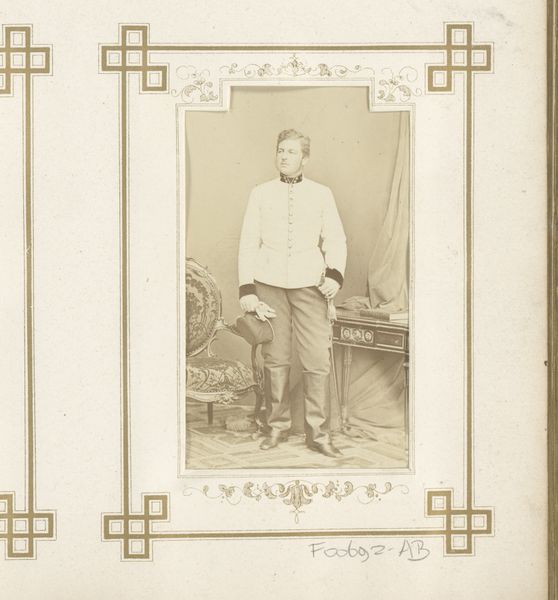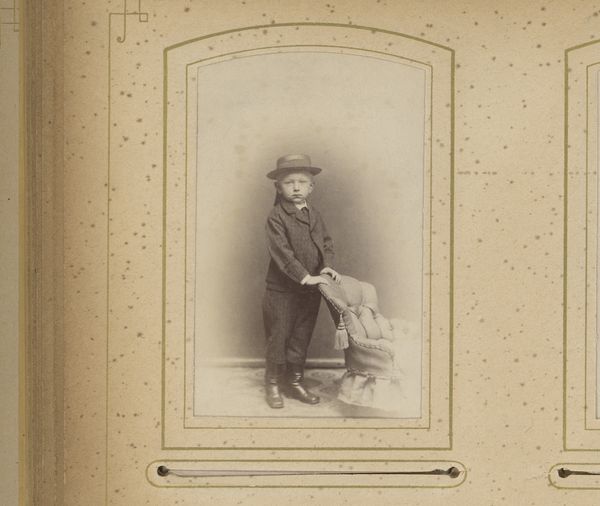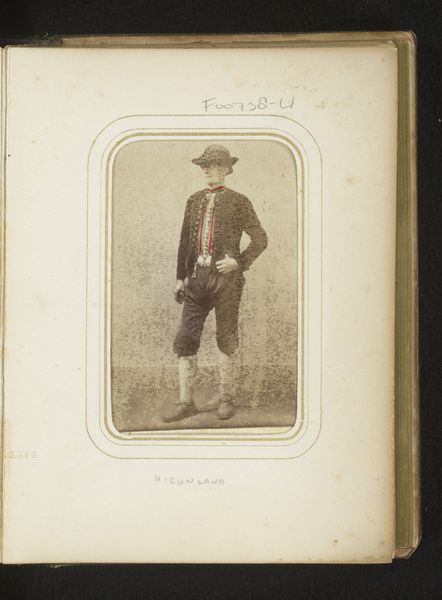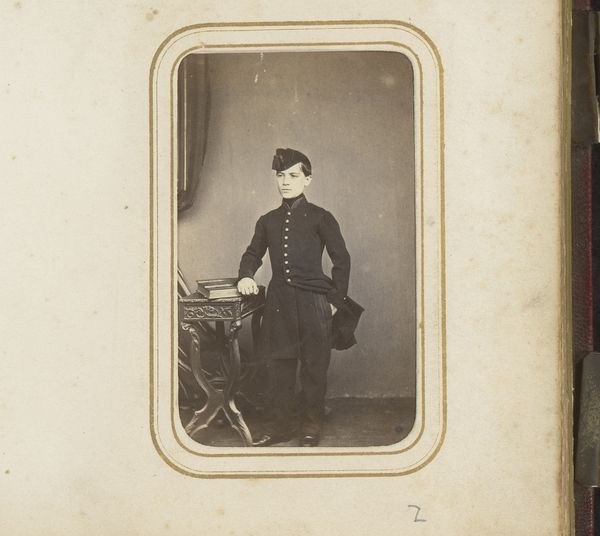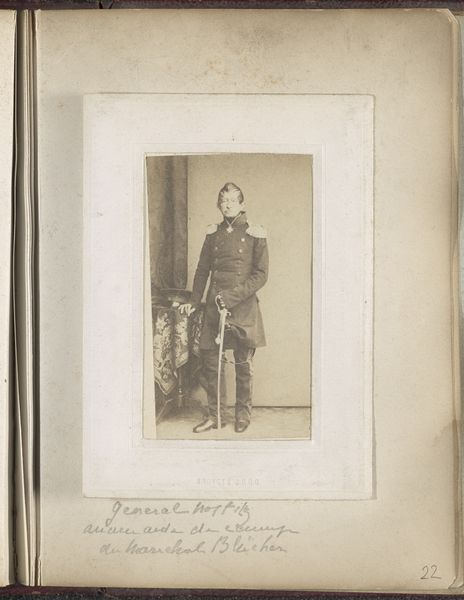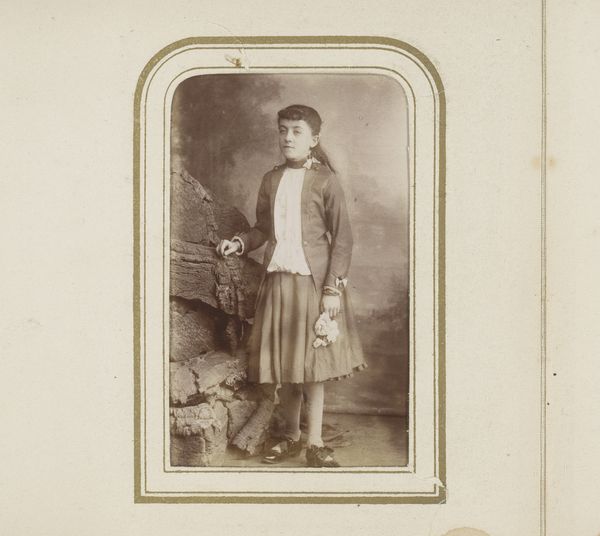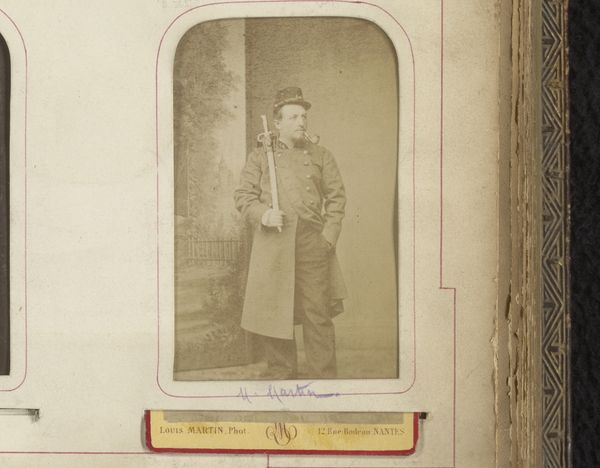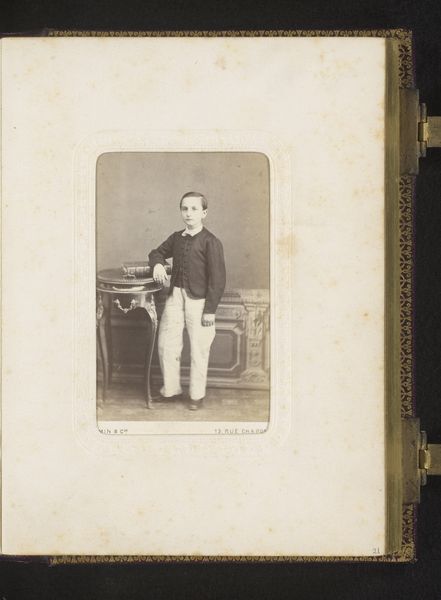
Portret van een man in klederdracht, vermoedelijk van Zeeland, met juk met emmers 1852 - 1872
0:00
0:00
daguerreotype, photography
#
portrait
#
daguerreotype
#
photography
#
genre-painting
#
realism
Dimensions: height 85 mm, width 53 mm
Copyright: Rijks Museum: Open Domain
Editor: Here we have "Portret van een man in klederdracht, vermoedelijk van Zeeland, met juk met emmers," or "Portrait of a man in traditional costume, presumably from Zeeland, with yoke and buckets," a daguerreotype photograph by Hendrik Hermanus Roelse, made sometime between 1852 and 1872. There's something so stark and straightforward about it. What do you see in this piece? Curator: I see a potent image of labor and identity. This portrait, likely staged, presents us with a very specific representation of Zeeland's working class. It's crucial to consider the power dynamics at play when Roelse chose to document this individual. How does this image perpetuate or challenge existing stereotypes about rural communities? What does it tell us about the social hierarchy of the time and the visibility, or lack thereof, afforded to working-class individuals? Editor: I hadn't considered it as staged before, but now that you mention it, his pose does seem very deliberate. So you're suggesting it's less about a true likeness and more about creating a symbol? Curator: Exactly. We need to question the 'authenticity' of this portrayal. Was this man compensated? Did he have any agency in how he was presented? What narratives were being constructed and consumed about rural life and labor? How might the same image be received by different audiences? The work exists at an intersection of representation, labor, and social class. Editor: That's fascinating. It really reframes my initial impression of the piece. I initially just saw a historical image. Curator: Indeed, the camera is never neutral. Exploring such photographic portraits offers powerful insights into historical biases, and helps us understand the politics embedded in representation. What has been captured – and what has been omitted – are equally informative. Editor: I'll definitely look at photographs differently from now on!
Comments
No comments
Be the first to comment and join the conversation on the ultimate creative platform.
